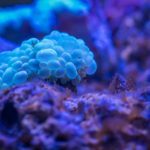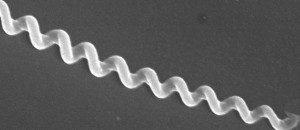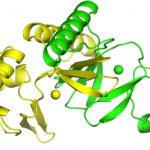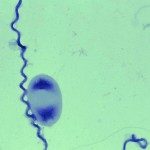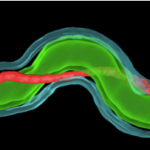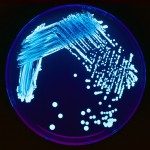Leptospirosis is a zoonotic bacterial disease found predominantly in impoverished populations inhabiting developing countries with tropical climates. Rodents are the main reservoir of the disease, excreting the bacteria in their urine. Humans are usually infected through contaminated water. Leptospirosis is estimated to cause more than one million severe cases with approximately 60,000 deaths per year. It is an emerging disease due to the growing number of inhabitants residing in urban slums and the increased frequency of extreme climatic events.
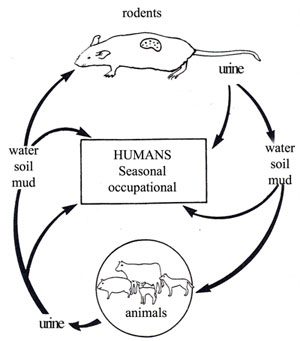
Fig. Cycle of leptospirosis (from Faine et al. 1999). Mammalian species excrete leptospiral pathogens in their urine and serve as reservoirs for their transmission. Leptospirosis is transmitted to humans by direct contact with reservoir animals or, more frequently, by exposure to environmental surface water or soil that is contaminated with their urine.
Antibiotic therapy is beneficial but must be administered in the early stage of the disease. However, leptospirosis is often diagnosed late, due to its wide spectrum of symptoms, ranging from a flu-like syndrome to renal failure. The symptoms mimic the clinical presentations of many other diseases, including dengue fever and malaria. In addition, most cases of leptospirosis are currently detected by means of a complex and fastidious serological test, but antibodies are generally not detectable in the blood until about one week after the onset of symptoms. Human vaccines are available in some countries, but usually consist of killed bacteria of the most prevalent serovar. They present a number of disadvantages, including side effects, short duration of efficacy and incomplete protection against other serovars. Leptospirosis also affects animals worldwide, including livestock, and is therefore of economic importance.
As a spirochete, Leptospira spp. which includes the causative agent of leptospirosis, differ considerably from other members of Gram positive and Gram negative bacteria. For example, Leptospira spp. can be distinguished from other bacteria on the basis of their unique helical shape (see picture). The motility of spirochetes is unique in that they can swim in highly viscous gel-like media that classically slow down or stop the motility of other flagellated bacteria (see videomicroscopy below). This motility in spirochetes is conferred by flagella inserted at both poles of the cells and extended within the periplasm (endoflagella) between the outer and inner membranes. Progress in our understanding of the general biology and virulence mechanisms of pathogenic Leptospira has been slow and difficult. This is mainly due to the lack of adequate and efficient genetic tools. Progress in our understanding of the general biology and virulence mechanisms of pathogenic Leptospira has been slow and difficult. This is mainly due to the lack of adequate and efficient genetic tools.
Fig. videomicroscopy of Leptospira biflexa
The research unit also hosts the French National Reference Center for leptospirosis and a WHO Collaborating Center for Research and Reference on Leptospirosis. In mainland France, about 700 cases are diagnosed each year and the incidence rate can be more than one hundred times higher in french oversea territories than in mainland France.
more informations on the National Reference Center for Leptospirosis : https://research.pasteur.fr/fr/nrc/leptospirosis/



